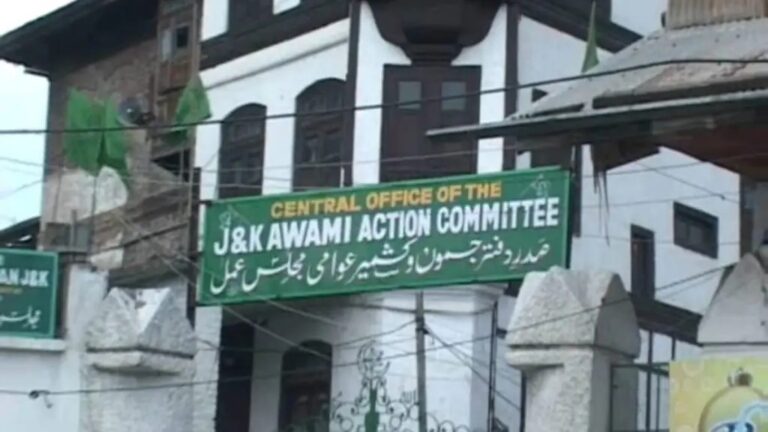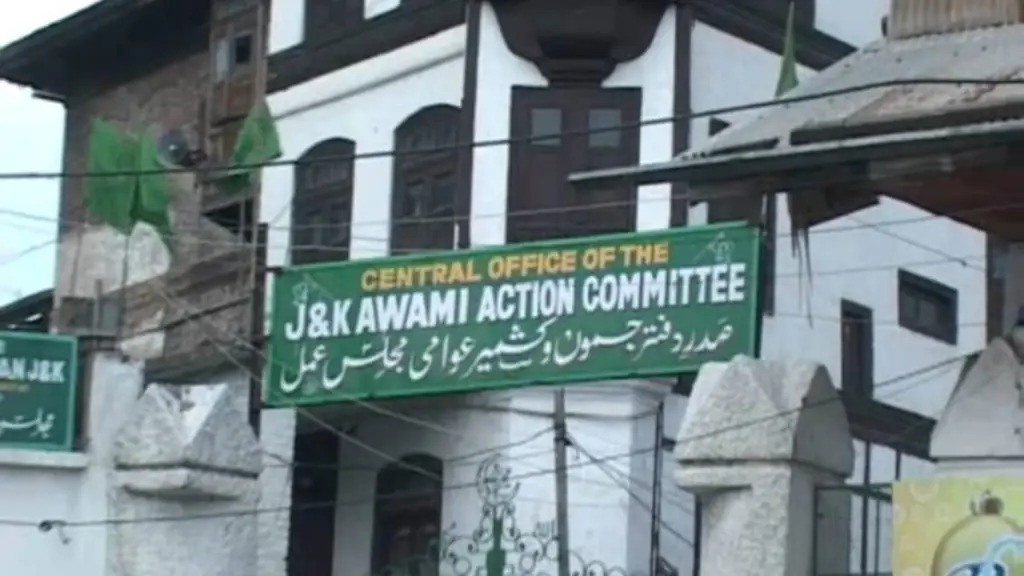
TIGER OF HILLS: REMEMBERINGCOMMANDER SHAHEED AHMAD HASSAN
Ali Muhammad Hamdani (Translated from Urdu by Nawaz Khan)
It was the intervening night of July 18 and 19, 1997. Indian commandos parachuted onto the peak of “Mang Naar,” part of the Pir Panjal mountain range, located at an altitude of 12,000 feet. This was the stronghold of Hizbul Mujahideen’s advisor, General Ahmad Hassan Shaheed. The Indian army assumed that this place housed a major camp with numerous mujahideen, so they deployed hundreds of commandos. Additionally, the surrounding area was swarmed with troops, ensuring that if the mountain tigers managed to break the encirclement, the waiting jackals could ambush them.
The moment Indian commandos descended onto the mountain top by parachute, Ahmad Hassan Shaheed and his loyal fighters quickly assessed the situation. This group consisted of highly trained young fighters, meticulously prepared by Ahmad Hassan Shaheed. They spread out around their base, taking up defensive positions. It was better to stand and fight than to die trying to break through the cordon. They had already made a decision and were ready to embrace their fate.
As the Indian commandos tightened the noose, Ahmad Hassan Shaheed’s warriors, following his fearless instructions, lay in wait in their positions. When the commandos came close, they were met with a barrage of bullets from all sides, intensifying the battle. The clash continued throughout the night. The fighters of resistance thus lightened the battlefield.
As the time for the pre-dawn prayer (Tahajjud) neared, a time when Ahmad Hassan Shaheed usually stood before his Lord, praying fervently for the success of their movement and for martyrdom, the acceptance of these prayers was imminent. The occupying army’s commandos’ encirclement grew tighter, and some noble souls had already taken a flight to paradise. As the first rays of sunlight bathed the peaks of Pir Panjal, Ahmad Hassan Shaheed and his young fighters embraced martyrdom. Sixteen Indian commandos were also killed in the encounter, with several more injured.
Ahmad Hassan Shaheed and his companions, Nazir Ahmed (Bilal) from Sumbad Ram Ban, Shahnawaz (Barkat) from Mothti Marmat Doda, Nazir Ahmed Dar (Ghazi Aslam) from Maisuma Srinagar, Shabir Ahmed (Saleem) from Gohar Porah Chadoora, and Chaudhry Zubair Ahmed Khan from Thuro Udhampur, fought bravely thereby creating a memorable chapter of courage and valor in the mountains of Pir Panjal.
It seemed as though Ahmad Hassan Shaheed sensed that his time in this world was short. He was a Moomin who could foresee things. This is evident from a letter he wrote to his supreme commander, Syed Salahuddin, at the base camp shortly before his martyrdom. In the letter, he mentioned, “The people here are eagerly awaiting you. They will support you with their lives and provide shelter, though they are impoverished and backward. To further strengthen the movement, please take the step … and pray for our martyrdom.”
Ahmad Hassan Shaheed was born 55 years ago in the vibrant village of Gohar Pora, Chadoora, Budgam. He completed his BA, followed by an LLB, and then served as a Reader in the judiciary. He left his job to dedicate all his skills and energies to Tehree-e-Islami. He was a precious asset to Jamaat-e-Islami, having read the literature of Islamic thinker Syed Abul Ala Maududi during his student days. This instilled in him a passion to spread this enlightening message and make him a dedicated member and later a district secretary and central Shura member of Jamaat-e-Islami.
Jamaat-e-Islami’s approach of presenting Islam as a comprehensive system of life, exposing the hollowness and depravity of false ideologies and regimes, kept the Kashmir issue alive. In this pursuit, its members, including Ahmad Hassan Shaheed, faced severe persecution and imprisonment. Despite multiple incarcerations, he resumed his work upon release and delivered speeches in mosques, visiting homes and markets, and engaging in missionary activities.
In 1986, the puppet administration of India dismissed nine employees for their Islamic and pro-freedom beliefs. This led to widespread protests and the formation of the Muslim Employees Front, with Ahmad Hassan playing a central role. When armed jihad began, he became a company administrator and later a battalion commander. He motivated many young men from his model village of Gohar Pora and the entire Budgam district to join the armed struggle.
Ahmad Hassan Shaheed was a model worker, a devoted mujahid, and a compassionate leader. He involved his own family in the jihad, including his only son. His alignment of words and actions left a profound impact on society. He sent his son for training early on and actively participated in collecting and distributing zakat and alms. He focused on instilling the true spirit of jihad among the mujahideen and maintained good relations with other resistance organizations. His decisions were respected and accepted by all mujahideen.
In 1992, Ahmad Hassan Shaheed visited the base camp with the martyred leader of the Kashmir jihad, Shamsul Haq. Despite his heavy build, he insisted on continuing the difficult journey through rough and tough terrain. His humility shone through when a guide scolded him, but Shamsul Haq later reprimanded the guide for his disrespect towards Ahmad Hassan. His stay at the base camp for over four years was marked by active participation in all training phases and a refusal to complain about the hardships faced. His discipline and dedication were exemplary.
Ahmad Hassan Shaheed’s commitment to uniting the mujahideen was unwavering. He established contacts with leaders of different resistance organizations contributed significantly to the formation of the United Jihad Council. His honesty and forthrightness were well-known, and his simple, hard-working nature made him stand out.
In the last days of April 1997, he set off for the hot fronts, meeting everyone before leaving and seeking forgiveness for any mistakes. Upon reaching Udhampur, he inspired and trained the youth and instilled a fervor for jihad in them. His efforts to establish a jihad network, especially in the mountainous region near Gool Gulab Garh, were successful.
Ahmad Hassan Shaheed left behind a widow, a mujahid son, and four daughters, only one of whom was married. They now await the day when their compassionate father will welcome them at the gates of paradise and embrace them with all his love and care.
Editor's Pick
Recent Reviews
Socials Share
Facebook
Twitter
LinkedIn




